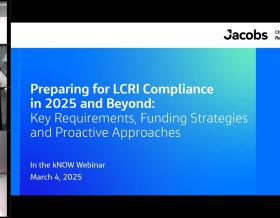
Jacobs Global Operational Readiness and Airport Transition (ORAT) Practice Director Michael McElvaney walks us through the 5 W’s and 2 H’s of the risk-based approach to operational readiness and transition to new facilities.
What is ORAT?
ORAT stands for Operational Readiness and Airport Transition. It’s a risk-based approach to operational readiness and transition for new facilities. ORAT is comprised of a series of processes where checks and balances identify and mitigate risks before operational impacts occur. It’s also a process that, when initiated early in a program, can help avoid costly change orders and assess lifecycle costs.
Why do clients / facilities need ORAT?
New airport facilities have been subject to numerous issues during their openings. There have been several examples of new terminals and airports that were fraught with operational problems on their opening days and weeks, with issues on systems from baggage handling to flight information displays; access control systems failing to work as planned and staff not being familiar with the layout of the facilities. With ORAT, airport executives and program managers can have the assurance that what they built is going to be efficient from an operational perspective, be designed to meet the stakeholder requirements and be a success not only on opening day but for the life of the facility.
How does Jacobs deliver ORAT?
Engaging the ORAT process early in the life of a project maximizes potential benefits because it ties in asset management by assessing and recommending equipment and systems based on operational need and lifecycle costs. The types of systems and equipment are captured in the operational concepts as they may influence the operation.
Early engagement also provides the opportunity for stakeholders to influence the design of new facilities much more than after design completion and during construction. Early engagement truly is a key factor for operational success because, as a project moves forward beyond design, opportunities to reduce costs diminish.
We look at a two-phase approach to ORAT. The first phase is strategic– early engagement of ORAT in projects is when we develop a concept for how new facilities will operate. By engaging the stakeholders early, the ability to influence the design of a facility provides long-term benefits to the operation. The second phase is tactical – focusing on the readiness of the staff, systems/equipment and processes along with the transition to the new facilities.
We emphasize the benefits of ORAT that take owners beyond facility opening planning activities. Activation planning has been popular with many airports because it’s been a means for addressing operational readiness before airport terminal operations evolved and technology drove change. However, activation planning has the potential to produce operational failures, because plans are formed after the project is designed and is under construction, and there is limited early engagement with the stakeholders to capture the evolving business changes.
Although activation is intended to train staff on how to operate the building as designed and test systems equipment tied to operational processes, it lacks the ability to influence the design of the final product from an operational perspective as well as the experience for the end-users of the facility.
When is it best to do ORAT?
As I stated earlier, engaging the ORAT process early is key. A comprehensive ORAT program engages stakeholders early in the planning phase to fully understand operations. It’s at this time when airports, airlines and other stakeholders can capture operational concepts and define key performance indicators (KPIs). These KPI metrics are the basis for setting and maintaining standards of customer experience. The benefit of ORAT developing the Concepts of Operations Plan and incorporating KPIs before the design begins is for operational change orders to be minimized and the facilities are designed around them versus establishing KPIs around the design.
ORAT works with the airport/airline and the design team to ensure the ways the airport and stakeholders plan to operate are captured in the design criteria for the new facilities. This includes incorporation of new technologies and improved levels of service into their operation. When keys are handed over, the facility is designed (and ready) to meet the operational requirements of the airport and its stakeholders.
One of the critical characteristics of any ORAT program, including those used at other non-airport facilities such as hospitals and stadiums, is that it can seamlessly fit into any project development. If ORAT is initiated after construction begins, the ability to influence design and address lifecycle costs of systems and equipment is minimal to negligent. The operational concepts that ORAT identifies through early stakeholder engagement can be captured during the planning phase. When stakeholder concerns are known and addressed before construction begins, design modifications and change orders can be avoided.
Similarly, bringing in the facilities maintenance and IT stakeholders early allows for cost assessments of the systems and equipment being specified. As a rule of thumb, 75% of equipment costs comes after the first day of its operation in the form of operating costs versus the 25% cost spent in the procurement of it. Involving an ORAT plan early allows for consideration and analysis of the lifecycle costs to be identified before procurement of those systems/equipment, thus allowing for possibly more informed decisions regarding the selection of systems/equipment resulting in long-term savings.
How much does an ORAT Program Cost?
Cost is a question usually asked after a program budget is developed. It’s like saying you’re going to buy a car but not knowing how much you are going to spend. It all depends on the approach the project takes towards ORAT. If an owner adopts the Jacobs approach and employs ORAT at the start, during the planning phase (typically on a new terminal project), ORAT will cost between one third and one half of a percent of the program budget. (This cost does not include any logistical activities associated with a mobilization and move phase where additional resources would be needed. Such costs are tied to the size of a move, equipment/furnishings, etc.)
It’s best if discussions regarding ORAT begin prior to responding to RFPs/RFQs when the approach and level of effort can be determined in response to what is being solicited. In some cases, airports are asking for several deliverables that fall under the Jacobs umbrella of ORAT but don’t specify “ORAT”. We can assist in the response.
Who are our ORAT experts?
Execution of a comprehensive ORAT program requires several areas of expertise and skill sets. For example, to develop a Concept of Operations for a new terminal, Jacobs deploys subject matter experts in the following areas:
- Stakeholder Engagement
- Business Planning
- Concessions
- Terminal Operations
- Airside Operations
- Ramp Tower Operations
- Baggage Handling Systems
- Landside (ground transportation operations)
- Airline operations
For the other elements of ORAT Jacobs has a team of experts to develop and conduct the following:
- Asset Management
- Familiarization-Induction-Training
- Operational Trials
- Mobilization & Move (Transition)
Where are we applying ORAT?
Jacobs is currently engaged in ORAT on several projects:
- At Los Angeles International Airport (LAX) we are providing ORAT advisory services to the chief development officer for the new Mid-Field Satellite Concourse that will be an extension to the International Bradley Terminal. We developed the ORAT Stakeholder Management Plan and the ORAT Implementation Plan and are actively engaged in developing the Familiarization, Induction and Training (FIT) program, the Operational Trials Program and providing assurance of the Commissioning activities.
- On the new Chicago O’Hare (ORD) Global Terminal project, we are preparing to begin the development of the Concept of Operations.
- Seattle-Tacoma International Airport (SEA) is utilizing our expertise on the execution of ORAT. We have developed and executed the operational trials for the NorthStar project.
- For the new pier project at the Amsterdam Schiphol Airport (AMS), the ORAT team has been engaged in providing ORAT Advisory and Oversight services.
Looking for more? Download our factsheet or explore more below.
About the author
With more 35 years of experience and airport executive operational management experience, Michael McElvaney leads the Jacobs/LeighFisher Global Operational Readiness and Airport Transition (ORAT) practice. Specializing in providing airports and airlines with risk assessments of new facilities in the development phase where gaps may exist between design and operational functionality, he delivers a variety of ORAT advisory services at major airports around the globe, including Los Angeles International Airport, Amsterdam Schiphol International Airport and in support of the new Global Terminal project at Chicago O'Hare International Airport.












































